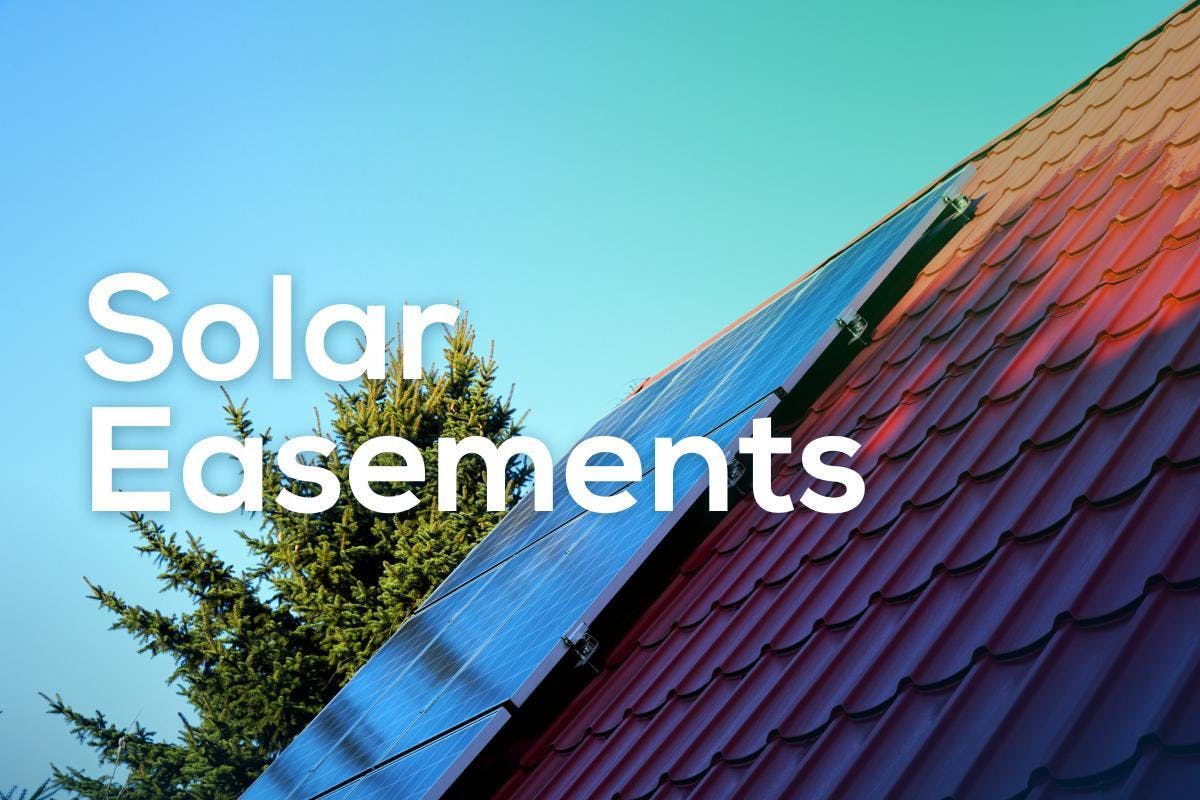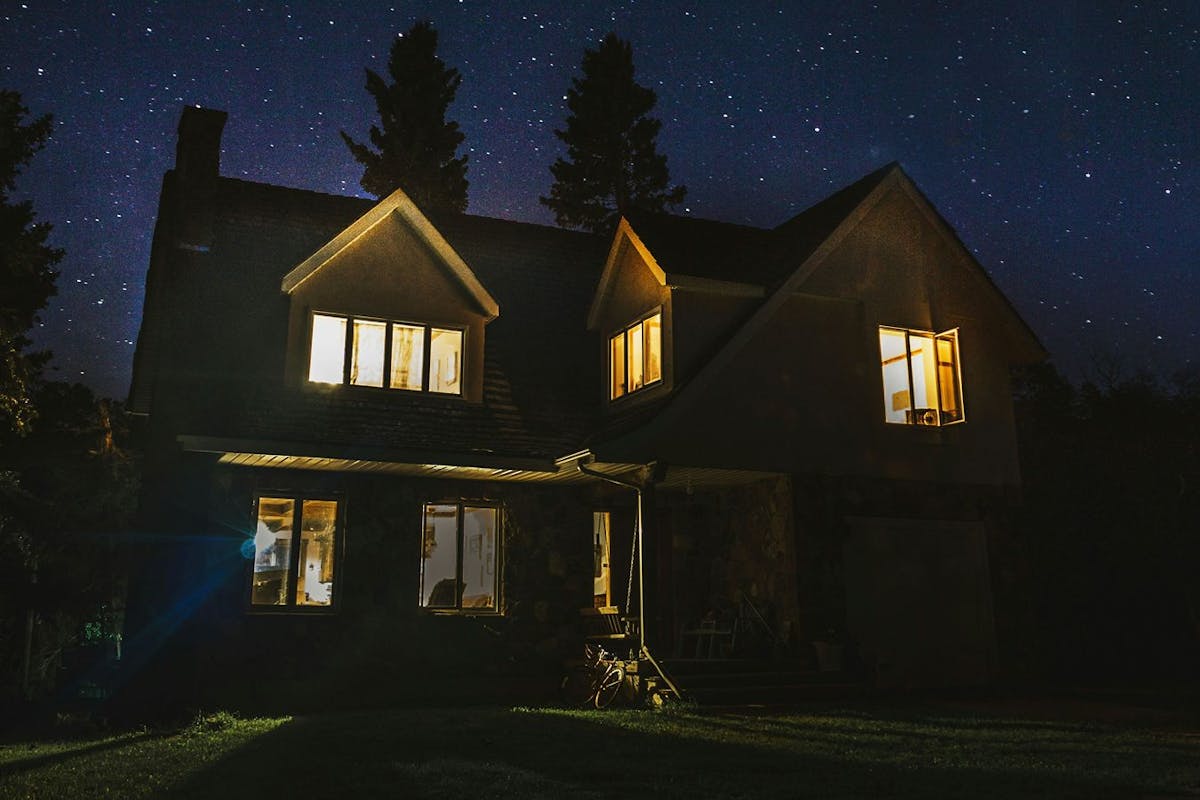Understanding Solar Easements in the United States: How They Work
Last edited

Author
Andrew Blok
Electrification and Solar Writer and Editor

Editor
Andrew Giermak
Solar and Electrification Writer and Editor

When you purchase a solar energy system, you commit to 25+ years of emission-free electricity production on your property.
So long as the sun rises each morning and shines on your solar panels, you can generate new emission-free power day after day, saving tens of thousands of dollars on your energy bills over the lifetime of your system.
Going solar can be a dream come true for many homeowners. Unfortunately, this reality can sometimes be tarnished if the owner of an adjacent property has other plans.
Let’s say you live in a metropolitan area where the homes are relatively close together. If your next-door neighbor decides to build a towering 6-story apartment building, your solar panels’ production could be wiped out.
A solar easement could help guarantee your property’s access to solar power in scenarios like this.
See how much you can save by going solar with Palmetto
What Is a Solar Easement?
A solar easement is a legally binding agreement between two property owners that grants airborne access to direct sunlight for the purpose of solar power generation. In other words, if there is a mutual solar easement between you and your neighbor, neither of you can build a structure or grow a tree that blocks access to direct sunlight on the adjacent property.
Solar easement agreements are different from solar access laws, which keep homeowners’ associations (HOAs) from barring them from getting solar panels. Solar access laws are written pieces of legislation that prevent HOAs and other organizations from barring solar installations, whereas solar easements are agreements made between two property owners.
Although a handshake agreement between you and your neighbor may be a temporary way to respect solar rights, a solar easement makes things more official — through documents that must be filed with the local building authority. Depending on your location, this may be your city, town, or county clerk.
Do you need a solar easement?
No, if you install solar panels on your property, you do not need a solar easement by law. Solar easements are uncommon in the United States, and only available to homeowners in some states (more on this later).
Unless the amount of sunlight on your solar panels is very likely to be affected by the activities of a neighboring property, you generally will not have to worry about creating a solar easement after your installation. Although solar easements are a good idea in theory, they also require significant time, effort, and legal costs to create and file.
Solar easements can sometimes be difficult to obtain, as neighboring property owners may have no reason to sign your paperwork. If you ask your neighbors to sign a solar easement, they may want something in return. While your best friends in the neighborhood may sign for a six-pack of drinks or a home-cooked meal, unfortunately, you cannot force a property owner to sign a solar easement, and they have every right to refuse or negotiate your offer.
How do solar easement laws work?
A solar easement can be considered both an “aerial” easement and a “negative” easement because it restricts the use of physical, airborne space. Like all property easements, aerial easements for solar are officially tied to properties themselves, rather than their owners.
A physical solar easement relates to an exact area on a property that must receive direct sunlight for solar energy. While the sun travels in a different path every day, solar easement agreements are usually made while considering the sun’s position on December 21st, at its lowest point in the sky every year.
To protect a set of solar panels’ access to sunlight, most solar easements clearly outline a set of restricted obstructions that a neighboring property owner cannot add if it were to cast solar-preventing shade. This includes (but is not limited to) buildings, trees, billboards, chimneys, antennas, and other large property features.
Where can you create a solar easement?
In 2023, about 75% of American states have official laws that allow property owners to establish solar easements. While some states have solar easement laws that date back to the 1970s (such as California and Colorado) there are also many locales (such as Alabama, Arizona, and Oklahoma) that have never established any solar easement legislation.
To find out whether or not you can create a solar easement in your state, we recommend reaching out to your local building office or checking a trusted source such as the Database of State Incentives for Renewables & Efficiency, which is maintained by the North Carolina Clean Energy Technology Center with funding from the U.S. Department of Energy.
How to Create a Solar Easement
Although the process will vary depending on where you live, the general structure for creating a solar easement is fairly straightforward, no matter your location. Below, we’ll outline three quick steps you can follow to create a solar easement.
Step 1: Draft the document with the solar easement details
Once you have familiarized yourself with the solar easement laws in your area, you can draft your paperwork using any resources provided by your local government or building authority. At this step, you may want to talk to your installer about their thoughts on a solar easement and whether or not it is something they can help with.
Although making things as official as possible is important, before you reach out for legal counsel, keep in mind you may be billed for any advice or consultation provided by a licensed professional.
See how much you can save by going solar with Palmetto
Step 2: Get to know your neighbors
After your paperwork is ready, it is time to approach your neighbors with the idea of signing your solar easement. Although you may be afraid of rejection, it is reasonable for you to ask your neighbors to sign, and you may be pleasantly surprised with a quick agreement or a reasonable counteroffer.
If your neighbors are also interested in saving money with a solar energy system (much like yourself), this conversation can also be financially rewarding if your installer offers incentives for solar referrals.
Step 3: Submit the paperwork and enjoy the sunshine
Finally, once you have everything signed, ready, and approved by your legal team, you can submit your paperwork to the local building authority. Whether submitting your solar easement in person or virtually, all parties to the agreement should retain an official copy of the filled paperwork.
States With Solar Easement Policies
States across the country have laws that allow for solar easements.
(Policies change and details vary from state to state. Confirm your local rules. Palmetto doesn’t offer legal advice.)
| State | State | State |
|---|---|---|
| Alaska | Maine | New York |
| California | Maryland | North Dakota |
| Colorado | Massachusetts | Ohio |
| Florida | Minnesota | Oregon |
| Georgia | Missouri | Rhode Island |
| Idaho | Montana | South Dakota |
| Indiana | Nebraska | Tennessee |
| Iowa | Nevada | Utah |
| Kansas | New Jersey | Virginia |
| Kentucky | New Mexico | Washington |
Are Solar Easements Worth It?
Although we are strong proponents of solar energy rights, solar easements are not always necessary or worth it for most homeowners. Unless you have a feeling a new high-rise apartment is going in next door (which may already be prevented by zoning or other building codes) the costs and complications of establishing a solar easement may not be worth it, especially if your neighbors are reluctant to sign.
While those in rural areas are less likely to need solar easements due to the distance between houses, those in dense neighborhoods with homes close to property lines may even require multiple property owners to sign agreements to ensure direct sunlight from every angle. Often, this can be more trouble than it’s worth.
If you’re interested in seeing what solar panels — fed with unfettered access to the sun — can save you, get a free estimate with Palmetto’s solar savings calculator.
See what solar can do for you:
Frequently Asked Questions
Do solar easements have to be written?
Yes. Solar easements typically need to be written and filed with the relevant local governing body. Requirements vary by state, so confirm the details of your local regulations.
Can my neighbors block my solar panels?
Solar easements are voluntary but binding agreements that protect access to sunlight on your property. Without an easement, it’s possible that growing trees or new construction could later block sunlight to your property.
If your home is governed by an HOA, it may be able to block your solar panels, though many states have solar access laws that stop HOAs from completely banning solar panels.
Disclaimer: This content is for educational purposes only. Palmetto does not provide tax, legal, or accounting advice. Please consult your own tax, legal, and accounting advisors.


